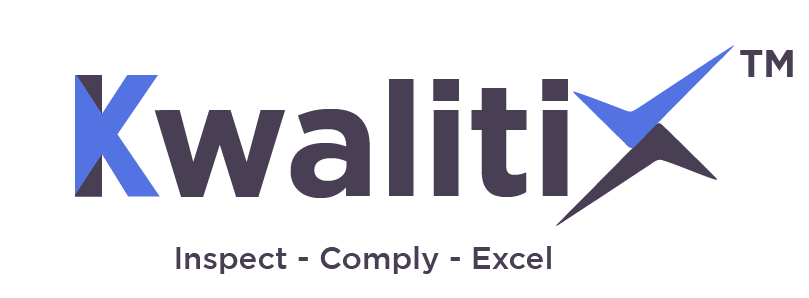Introduction
In today’s fast-paced world, businesses across various industries are continually searching for methods to improve efficiency and productivity. One area where technology has significantly contributed to achieving these goals is inspections and audits. Traditional manual inspection and audit procedures are time-consuming, susceptible to human error, and frequently inefficient. Nevertheless, by harnessing technology, organizations can streamline these processes, enhance accuracy, and gain numerous benefits. In this blog, we will examine the advantages of employing technology to improve the efficiency of inspections and audits.
• Time-saving and Increased Efficiency
One of the key advantages of integrating technology into inspections and audits is the substantial time-saving and improved efficiency it provides. Firstly, automated systems can undertake tasks that would otherwise demand significant human labor and time. For instance, the utilization of digital inspection checklists or audit templates eliminates the necessity for manual data entry, enabling inspectors and auditors to accomplish their tasks with greater speed and precision. Moreover, technologies like barcode scanners, RFID (Radio Frequency Identification), or QR codes can expedite asset identification and tracking during inspections and audits, thereby reducing the time devoted to manual record-keeping. Overall, these technological advancements greatly improve the efficiency of inspections and audits.
• Enhanced Accuracy and Data Integrity
Manual inspections and audits are inherently prone to human error, which can lead to erroneous data and potentially expensive errors. However, by embracing technology-driven solutions, organizations can enhance accuracy and uphold data integrity. Firstly, digital systems can automatically verify data entries, promptly identifying inconsistencies and minimizing the likelihood of mistakes. Additionally, digital records are less susceptible to damage or loss compared to their paper-based counterparts, guaranteeing the security and effortless accessibility of critical inspection and audit data for future reference. In this way, technology significantly improves the efficiency of inspections and audits while mitigating the risks associated with human error.
• Real-time Data and Reporting
Traditional inspections and audits often involve lengthy paperwork and delays in data processing, which can hinder the ability to make informed decisions promptly. Technology streamlines this process by providing real-time data capture and reporting capabilities. With mobile devices or tablets equipped with inspection or audit software, inspectors and auditors can input data directly into the system while on-site. This immediate data availability enables organizations to promptly identify and address any issues, facilitating proactive decision-making and corrective actions.
• Standardization and Compliance
In many industries, adhering to specific standards and compliance regulations is crucial. Technology can aid in standardizing inspection and audit processes, ensuring consistency across various locations or teams. Digital checklists or templates can be tailored to include industry-specific requirements, making it easier for inspectors and auditors to adhere to predefined guidelines. Furthermore, by incorporating compliance regulations directly into digital systems, organizations can
minimize the risk of non-compliance, resulting in improved audit outcomes and reduced legal and financial liabilities.
• Increased Transparency and Accountability
The use of technology in inspections and audits promotes transparency and accountability. Digital systems provide a clear audit trail, documenting the entire inspection or audit process from start to finish. This transparency can enhance trust and credibility among stakeholders, including customers, regulatory bodies, and internal management. Additionally, digital systems can track and assign responsibilities to individuals, ensuring accountability for any identified issues or deficiencies during inspections or audits.
• Streamlined Communication and Collaboration
Collaboration among inspection and audit teams, as well as with other departments, is crucial for successful outcomes. Technology facilitates seamless communication and collaboration by enabling real-time data sharing and access. Inspection and audit software platforms often have built-in communication features, allowing team members to discuss findings, share images or documents, and collaborate on resolutions. This streamlined communication enhances efficiency, reduces the likelihood of miscommunication, and promotes effective teamwork.
• Improved Analysis and Trend Identification
Technology-driven inspections and audits generate vast amounts of data that can be analyzed to identify trends and patterns. Analytical tools can help organizations derive valuable insights from inspection and audit data, enabling them to identify potential risks, spot recurring issues, and make data-driven decisions to improve processes and mitigate risks. By analyzing historical data, organizations can identify trends, monitor performance, and implement proactive measures to enhance efficiency and effectiveness in future inspections and audits. This data-driven approach allows for continuous improvement and optimization of inspection and audit practices.
• Cost Savings and Resource Optimization
Implementing technology in inspections and audits can lead to significant cost savings and resource optimization. By reducing manual labor, eliminating paperwork, and automating data entry and processing, organizations can lower operational costs and reallocate resources to more value-added tasks. Additionally, digital systems can help prevent costly errors or non-compliance issues, saving businesses from potential fines, penalties, or legal disputes. Moreover, technology enables organizations to optimize resource allocation by identifying areas that require more attention or investment based on data analysis, ensuring efficient use of available resources.
• Remote Inspections and Audits
Advancements in technology have facilitated remote inspections and audits, particularly in situations where physical presence may be challenging or costly. Inspections and audits can be performed remotely using video conferencing, drones, or remote sensing technologies, reducing travel expenses and time. Remote inspections and audits not only save
costs but also improve operational efficiency by minimizing disruptions to ongoing operations.
• Integration with Other Systems
Technology-driven inspection and audit solutions can seamlessly integrate with other business systems, such as asset management, maintenance, or quality management systems. This integration allows for seamless data flow between different processes, eliminating the need for manual data transfer and improving overall efficiency. The
In addition to leveraging insights gained from inspections and audits, the integration of systems also enables organizations to continuously improve.
Conclusion
The benefits of utilizing technology to streamline and improve the efficiency of inspections and audits are undeniable. From time-saving and increased efficiency to enhanced accuracy, real-time reporting, and improved analysis, technology-driven solutions offer significant advantages for organizations in various industries. By adopting digital systems, businesses can enhance transparency, accountability, and compliance, while optimizing resource allocation and driving cost savings. Embracing technology in inspections and audits allows organizations to stay competitive, make data-driven decisions, and continuously improve their processes. To make future inspections and audits more efficient and effective, businesses must embrace the opportunities presented by technology.

